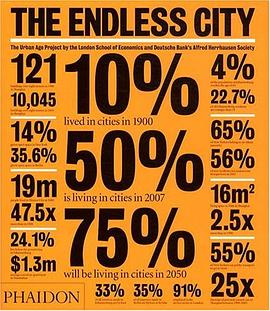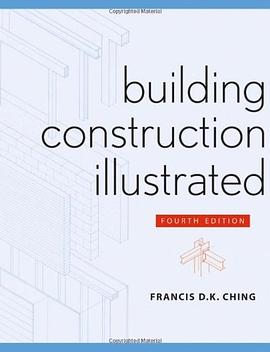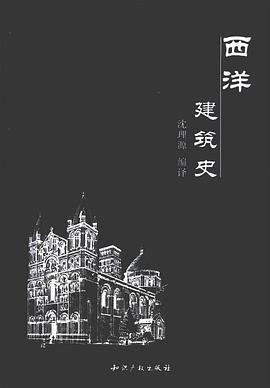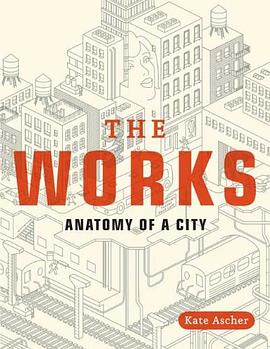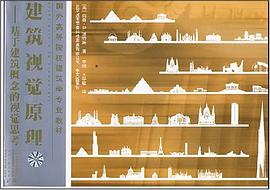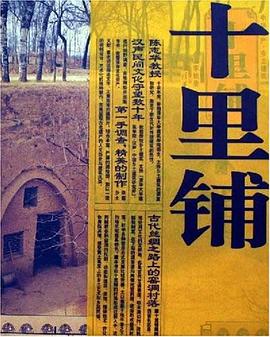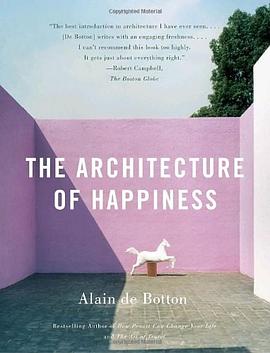

具体描述
From Publishers Weekly
With this entertaining and stimulating book, de Botton (How Proust Can Change Your Life) examines the ways architecture speaks to us, evoking associations that, if we are alive to them, can put us in touch with our true selves and influence how we conduct our lives. Because of this, he contends, it's the architect's task to design buildings that contribute to happiness by embodying ennobling values. While he makes no claim to be able to define true beauty in architecture, he suggests some of the virtues a building should have (illustrated by pictures on almost every spread): order combined with complexity; balance between contrasting elements; elegance that appears effortless; a coherent relationship among the parts; and self-knowledge, which entails an understanding of human psychology, something that architects all too often overlook. To underscore his argument, de Botton includes many apt examples of buildings that either incorporate or ignore these qualities, discussing them in ways that make obvious their virtues or failings. The strength of his book is that it encourages us to open our eyes and really look at the buildings in which we live and work. A three-part series of the same title will air on PBS this fall. (Oct. 3)
Copyright © Reed Business Information, a division of Reed Elsevier Inc. All rights reserved. --This text refers to the Hardcover edition.
From The Washington Post's Book World/washingtonpost.com
While happily reading Alain de Botton's graceful musings about architectural beauty, I was suddenly struck by the photograph of the Edgar J. Kaufmann House in Palm Springs, Calif., designed by Richard Neutra in 1946. I turned the page to see what de Botton had to say about it:
"The bourgeois couples who lived in Richard Neutra's mid-twentieth-century steel and glass pavilions in California may at times have drunk too much, squabbled, been insincere and overwhelmed by anxiety, but at least their buildings spoke to them of honesty and ease, of a lack of inhibition and a faith in the future."
That was all. Odd, I thought. De Botton never points out that this same Edgar J. Kaufmann commissioned the most beautiful private home in America, Fallingwater. He was. Nor, I discovered after checking the index, does he mention its architect, a certain Frank Lloyd Wright. Not once.
There's no obvious reason why the author of How Proust Can Save Your Life and The Consolation of Philosophy should leave out Wright. Perhaps he simply decided to challenge himself, to see if he could manage the trick, just as the French novelist Georges Perec once published a perfectly readable novel in which none of the words contain the letter E. Certainly, de Botton otherwise reveals his usual wide learning, lyrically deployed. He discusses the neoclassical influence of Palladio, the impact of Horace Walpole's Gothic extravaganza Strawberry Hill on 19th-century building in Britain, the austere concrete housing of Le Corbusier (who once dubbed his sterile tenements "machines for living"). But mysteriously, almost tantalizingly, he avoids the vastly influential, world-famous Wright, whose houses are so serenely beautiful to look at and yet almost impossible to live in comfortably -- at least if you slouch, have children or collect anything. Not surprisingly, The Architecture of Happiness is itself a carefully designed book, tightly constructed around the photographs that appear on virtually every other page. (Another mystery: Which came first, the images or the text?) There are pictures of castles, cathedrals, office buildings, private homes, bridges, hallways, windows, chairs, ironwork. De Botton visits a theme park in Japan built to resemble 17th-century Amsterdam, shows us a 30-foot-high obelisk memorializing a beloved pig, interprets the monumental elegance of the Royal Crescent in Bath, and discusses both the early modern pursuit of functionality and the ancient Japanese esthetic of wabi, which "identified beauty with unpretentious, simple, unfinished, transient things."
Throughout, de Botton argues that the buildings we walk by, work in or come home to affect how we feel. They influence our mood, our sensibility, our very character. No one is likely to disagree with this, especially those of us who dispiritedly sink down into our windowless office cubicles day after day or vainly yearn for just one room, let alone an entire house, like those in Architectural Digest. Alas, much of the time we must simply accept what we are given or settle for what we can afford. For at no point does de Botton seriously address the economics of architecture and interior design. Even if you do it yourself, construction of any kind, especially the highly individualized, is almost prohibitively expensive.
This reality, however, doesn't undercut de Botton's essential point: "Buildings speak -- and on topics which can readily be discerned. They speak of democracy or aristocracy, openness or arrogance, welcome or threat, a sympathy for the future or a hankering for the past." In short, "they speak of visions of happiness." De Botton attempts to understand aspects of that happiness by touching on the achievements or failures of particular styles and constructions. He offers us, in effect, a handsome photo album printed on coated stock, augmented by thoughtful, highly polished paragraphs and pensées. Time after time, his descriptions neatly capture the distinctiveness and character of even the most unusual buildings. Admittedly, those who prefer their sentences strictly functional may sometimes judge de Botton's a tad lyrical, just as his mini-essays risk sounding a little gushy. For the most part, though, he keeps his balance, largely through his quiet intelligence, passionate conviction and the charm of a personality lightly tinged with melancholy:
"The failure of architects to create congenial environments mirrors our inability to find happiness in other areas of our lives. Bad architecture is in the end as much a failure of psychology as of design. It is an example expressed through materials of the same tendency which in other domains will lead us to marry the wrong people, choose inappropriate jobs and book unsuccessful holidays: the tendency not to understand who we are and what will satisfy us.
"In architecture, as in so much else, we cast around for explanations to our troubles and fix on platitudinous targets. We get angry when we should realize we are sad and tear down ancient streets when we ought instead to introduce proper sanitation and street lights. We learn the wrong lessons from our griefs while grasping in vain for the origins of contentment.
"The places we call beautiful are, by contrast, the work of those rare architects with the humility to interrogate themselves adequately about their desires and the tenacity to translate their fleeting apprehensions of joy into logical plans -- a combination that enables them to create environments that satisfy needs we never consciously knew we even had."
De Botton concludes his book with an even more heartfelt plea: We must strive to build in a manner worthy of the meadows and woods we are destroying. "We owe it to the fields that our houses will not be inferiors of the virgin land they have replaced. We owe it to the worms and the trees that the buildings we cover them with will stand as promises of the highest and most intelligent kind of happiness."
Copyright 2006, The Washington Post. All Rights Reserved. --This text refers to the Hardcover edition.
From Bookmarks Magazine
Alain De Botton, author of How Proust Can Change Your Life, The Art of Travel, and Status Anxiety, among other books, takes a humanistic approach in Architecture of Happiness and explores the ways in which our built environment affects us. He occasionally overindulges in florid prose, but critics agree that his more general observations of architecture are sound and interesting, if not entirely novel. The average reader will find much of interest in the broad range of eras, places, and styles that de Botton discusses. Well-placed photographs illustrate each point in the text. The book is so visual, in fact, that the BBC is making a three-part television series based on it, to air on PBS this fall.
Copyright © 2004 Phillips & Nelson Media, Inc. --This text refers to the Hardcover edition.
Review
“De Botton has a marvelous knack for coming at weighty subjects from entertainingly eccentric angles.”
—The Seattle Times
"An elegant book. . . . Unusual . . . full of big ideas. . . . Seldom has there been a more sensitive marriage of words and images."
—The New York Sun
"With originality, verve, and wit, de Botton explains how we find reflections of our own values in the edifices we make. . . . Altogether satisfying."
—San Francisco Chronicle
"De Botton is high falutin' but user friendly. . . . He keeps architecture on a human level."
—Los Angeles Times
Product Description
The Achitecture of Happiness is a dazzling and generously illustrated journey through the philosophy and psychology of architecture and the indelible connection between our identities and our locations.
One of the great but often unmentioned causes of both happiness and misery is the quality of our environment: the kinds of walls, chairs, buildings, and streets that surround us. And yet a concern for architecture is too often described as frivolous, even self-indulgent. Alain de Botton starts from the idea that where we are heavily influences who we can be, and argues that it is architecture's task to stand as an eloquent reminder of our full potential.
作者简介
Alain de Botton is the author of three works of fiction and five of nonfiction, including How Proust Can Change Your Life, The Consolations of Philosophy, and The Art of Travel. He lives in London.
目录信息
读后感
我们家搬到现如今住的房子的时候,买了一整套家具,包括一套皮沙发。 用了差不多10年了,还很干净,除了其本身的特质之外,很重要的原因是冬天和夏天的皮沙发令人难受,夏天很热,冬天很冷,是窑洞的另一个极端。妈妈又发现了现在的流行趋势,那就是布沙发,她...
评分阿兰•德波顿似乎轻巧地承载着伟大启蒙主义者们的基本优点:不温不火、循循善诱、触类旁通、雄辩滔滔。作为一位文化界的杂食动物,他这一次终于将目光瞄准了建筑。这的确是一本外行人写给外行人看的建筑书。然而,它却足以令这个世界上绝大多数的建筑师为之汗颜。至于为什么...
评分(一)变化 我们家的第一台收音机用了15年。第一台电视机用了差不多10年。 我记得买第一台彩电的时候,妈妈说,这辈子看这个都够了。那时,是1982年。家里一下拿900元出来投资娱乐,在我们想象中,简直是壮举。 我还记得买第一台冰箱,和第一台洗衣机的时候,妈妈也说过...
评分《幸福的建筑》是一本不错的旅行读物,作者从心理学、美学、哲学来解读建筑的幸福度,给人一种全新的视角。 在他的书里,给我们还原了一个生活中的科比西耶,在他生活的时代,他就预见性地提出,未来的房屋应该简朴、干净、专业、廉价。他对任何的装饰都深恶痛绝。他说:“现...
评分【书摘】 1. 我们可以将真正美丽的建筑定义为赋有足够多先天的优点,足以经受住我们不论正面还是负面的心理投射的建筑。它们赋有真正美好的品质,而非单单令我们想起这些品质。它们因此能够超越其时间或地域的起源,并能在它们最初的观众早已消失之后仍能传达出它们包含的意...
用户评价
Convinced by the great reviews on Douban, I picked this book up again, only to find it bland and sorely disappointing as I remember it. I had expected something more than a mediocre coffee table book for enthusiasts, especially when the author is someone as experienced and knowledgeable as Mr de Botton.
评分Yes, this is the book Tom read on the train when he met Summer, and yes, I bought it when I was on alcohol as I was sad....and yes, it is a good read.
评分讲太多历史反而稀释了主旨. 配图十分用心. 业余爱好者可以当建筑入门书来感受一下.
评分用词真丰富,句子真长。。。
评分我晕,真的是讲建筑
相关图书
本站所有内容均为互联网搜索引擎提供的公开搜索信息,本站不存储任何数据与内容,任何内容与数据均与本站无关,如有需要请联系相关搜索引擎包括但不限于百度,google,bing,sogou 等
© 2026 book.quotespace.org All Rights Reserved. 小美书屋 版权所有

